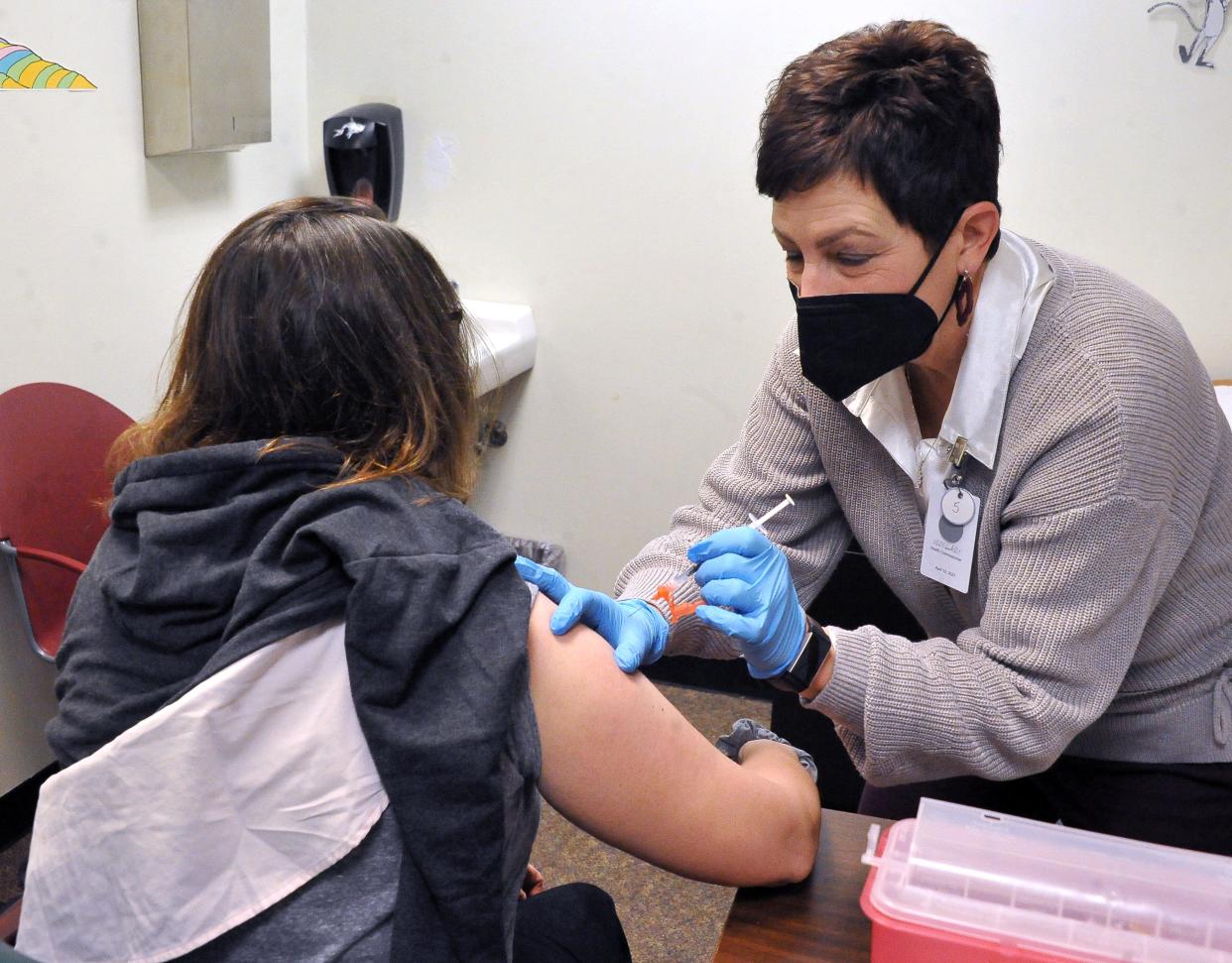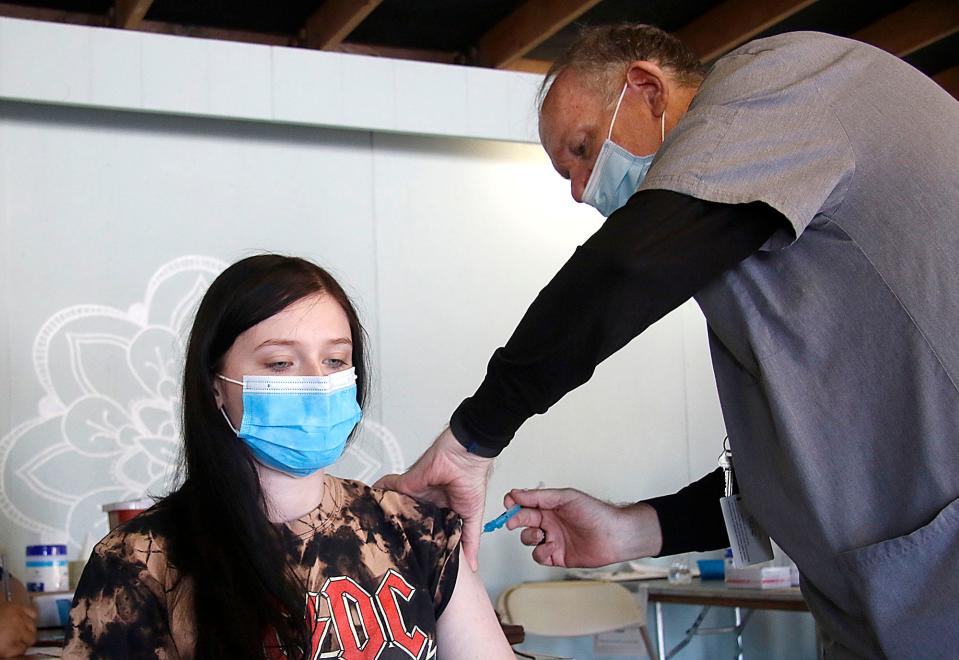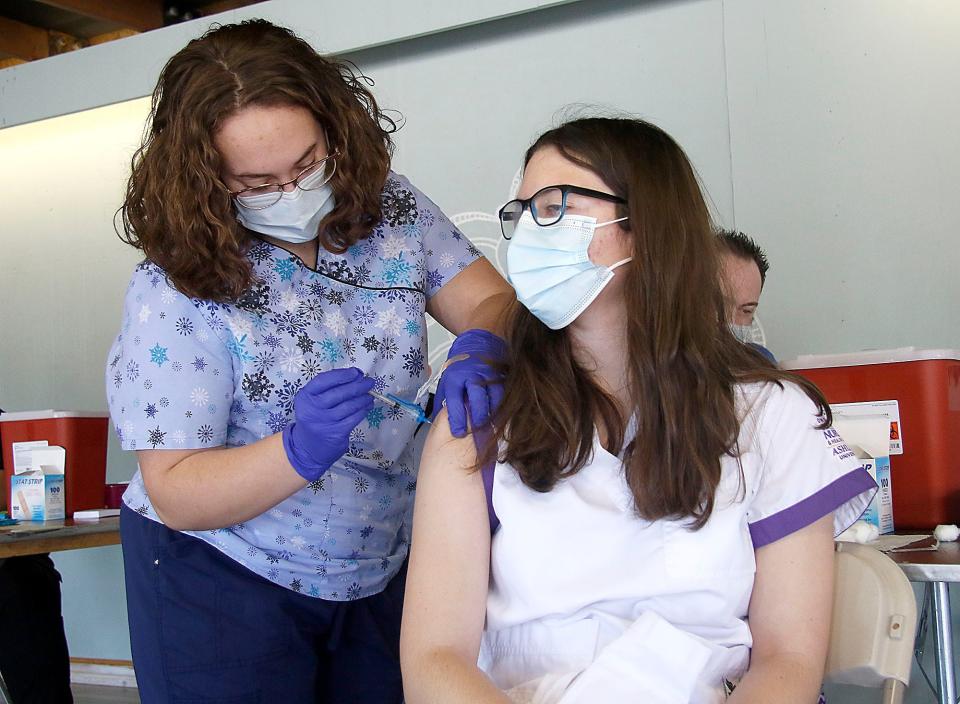COVID-19 cases skyrocketed in NE Ohio over the holidays, Omicron likely to blame

- Oops!Something went wrong.Please try again later.
More people caught COVID-19 in the latest wave of the pandemic than at any other time during the nearly two-year-long disease outbreak in Wayne and Ashland counties.
Following a brief lull in late October, cases quickly began to rise in early November before skyrocketing in December when the omicron variant arrived on the scene, said Wayne County Health Commissioner Nicholas Cascarelli.
"It was the most cases we had in a six-week period," Cascarelli said about December and January.
Although omicron is milder, it is more contagious. More cases mean more deaths and hospitalizations, he said.
COVID-19: Ohio's top doctor says there is 'light at the end of the tunnel' for COVID-19 omicron wave
Children were especially affected during this last wave, according to a report from the Cincinnati Enquirer.
Between Oct. 31 and Jan. 25, some 7,980 novel coronavirus cases were reported in Wayne County, according to the Ohio Department of Health and Wayne County Health Department.
The ODH reported 4,070 cases in Ashland County during the same time. Nearly 1,556 cases were reported in Holmes County, making it the second-largest coronavirus wave in the county's history.
"The week ending on Jan. 15 was the most cases we ever had, but on Jan. 26 cases began to drop off," Cascarelli said about Wayne County. "Hopefully that trend continues."
While the pandemic goes on, Cascarelli remains hopeful the decline will continue.
"I really hope this was the last big wave, but people should still get vaccinated just in case," he said. "It's like wearing a seat belt at this point."
Increased infections, more severe cases

The nearly three-month-long holiday wave claimed the second most lives of the pandemic so far. Only the 2020 fall and winter wave was deadlier.
In Wayne County, 75 people died of COVID-related complications while 41 died in Ashland County and 30 in Holmes County, according to ODH data.
Combined with the previous COVID-19 spike between August and October, those numbers nearly double.
"The deaths were significant, and while omicron is milder, it is more infectious," Cascarelli said. "Those who had it the worst were older and those not up-to-date on their vaccines."
Fundraising: Building demo derby: Holmes seeks grant to help fund tear-downs
Because more people caught the virus than at any other point in the pandemic in Wayne County, there were more chances for severe illnesses, he said.
The deadliest wave of COVID claimed nearly 149 lives in Wayne County, 82 in Ashland County and 89 in Holmes County in a six-month period, according to ODH data.
In total, nearly 726 people have died from coronavirus-related complications in the tri-county area since March of 2020.
Hospitalizations jump in each county, six-month highs in Wayne and Ashland
Wayne and Ashland counties saw the most hospitalizations of the pandemic in the last six months, with most being reported after Halloween.
Nearly 600 patients were hospitalized in Wayne County, 362 in Ashland County and 156 in Holmes County between August 2021 and January 2022, according to ODH data.
While some of these patients were vaccinated, most were not, according to a Daily Record report from December.
Crime: Orrville police looking for man who tried to entice two children from their home
A snapshot from mid-December at Wooster Community Hospital showed that medical staff treated 33 COVID-positive patients. Of that number, 28 were unvaccinated individuals placed in intensive care, said Shelly Huff, vice president of patient services and the chief nursing officer at the hospital.
Despite ODH data showing that unvaccinated people are at the most risk of severe illness, vaccination rates among the three counties are increasing at a snail's pace.

Vaccination rates in Ashland and Wayne counties remain at around 45%, according to ODH data. Holmes County remains low at 19%.
Since November, vaccination rates in Ashland County have increased by 2%, according to ODH data. Chris Bivens, director of nursing, said at one of the department's clinics, roughly 30 of 100 shots given were first doses, while most were boosters.
More children were hospitalized than in previous waves

More children filled Akron Children's Hospital beds than in any other wave of the pandemic, said Dr. Rob McGregor, the chief medical officer.
In eight weeks, new weekly pediatric cases went from nearly zero to a peak of around 1,200 nearly two weeks ago, he said.
With so many more pediatric infections, McGregor saw more severe cases.
"About three weeks ago we had 30 or 32 children in the hospital and some were put on a ventilator," he said. "There were more hospitalizations and more in the intensive care units overall."
Many of those in the hospital were either unvaccinated or not eligible for the vaccine, he said.
McGregor is optimistic though. New cases are dropping and hospital beds are becoming available.
"We won't know if we're in the clear for another eight weeks or so," McGregor said. "I won't say we are out of the woods yet, but we're seeing the edge of the woods."
In the meantime, he encourages everyone to get vaccinated, social distance and wear a mask.
Reach Bryce by email at bbuyakie@gannett.com
On Twitter: @Bryce_Buyakie
This article originally appeared on The Daily Record: COVID-19 cases reached new highs over the holidays in tri-county area


